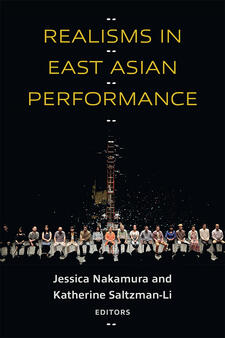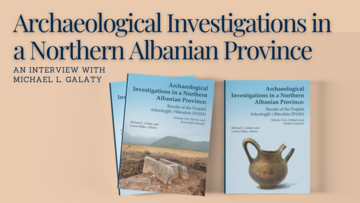Q&A with Jessica Nakamura & Katherine Saltzman-Li

This guest author post is a Q&A with Jessica Nakamura & Katherine Saltzman-Li, co-editors of Realisms in East Asian Performance, from the University of Michigan Press. The book is available in hardcover, paper, and open access.
What inspired you to bring together an edited volume on Realisms in East Asian Performance?
We are at the same institution, and we have long shared an interest in reevaluating realism in our respective specializations in Japanese performance. In our conversations, we discussed the under-representation of performance forms from East Asia and many other parts of the world in scholarship about theatrical realism. Since we had encountered a number of instances of realistic expression in our respective research, we felt we could make an important contribution to studies of theatrical realism through analyses of new examples. When we started planning the volume, we knew that we wanted to move beyond our own specializations and have conversations with scholars who work on material from around East Asia. The format of the edited volume would allow us to bring together a diversity of studies on realism across the region, and in so doing, to suggest new ways of thinking about it more inclusively.
What surprised you the most while working on the book?
What surprised us most was the degree of enthusiasm about the general topic in the positive responses from our contributors to the invitation to join the project. This reaction was reaffirming and inspiring, and it showed us that the need to explore realism outside of standard definitions and performance forms was something that many who study East Asian performance similarly felt. It confirmed for us the importance of addressing this central mode of theatrical expression from a broader range of examples than were commonly addressed. The group of unique topics we were able to assemble has resulted in what we hope is a thought-provoking volume, and one that will contribute to the fields of East Asian theater and performance while also opening up new understandings in theater studies worldwide.
What was the process of co-editing like? How did you bring together the different contributions into a cohesive book?
We were fortunate to hold a conference on the book’s topic in October 2020. We originally planned for an in-person conference in May 2020 that was postponed and moved online because of Covid. These changes proved to be an opportunity that brought in new scholars, especially those based in Asia, who for one reason or another had not been able to join the conference earlier. The initial conversations during our virtual conference were helpful in identifying major themes across work, some of which remained with the book and are in the final version in the books’ four parts.
During the process of co-editing chapters, our proximity allowed us to meet to discuss the chapters before responding to authors with editorial feedback. The discussions between us meant that we could be clear about our perspective as editors as we communicated with contributors. In working with many contributors, especially on our project with its broad temporal and regional reach, the back-and-forth communication with contributors on their individual essays varied widely. Flexibility was required, but the process was a very engaging and interesting one, partly due to the diversity of content and approaches in the essays, and we were fortunate that our contributors were so responsive during the revision process.
Do you have any advice for scholars thinking about editing a book of their own?
There are many stages to preparing an edited volume, whether you are the single editor or a co-editor. To begin with, and perhaps it goes without saying, the project should feel vital and important, and with clear expected contributions, as with your individual work. The topic must be well designed to accommodate the individual essays and styles of scholarship of multiple authors while offering a cohesive set of questions and arguments to allow the chapters to speak to each other.
The time you put into the proposal materials that the Press requests is very important. The clearer, fuller, and better explained your project is, the more likely you are to keep moving ahead toward a contract. We spent a great amount of time on our proposal, which gave us clarity about the project and allowed us to offer targeted feedback to contributors when we began receiving drafts of their chapters. Time spent on the proposal also gave us a good blueprint for the work ahead, including drafting the introduction, and it allowed us to prepare the full manuscript for outside review in a reasonable amount of time.
Co-editing adds a layer of complexity to the process, but it can also provide a very enriching intellectual experience that carries even into the later stages of the manuscript preparation. It is important to set up how you will co-operate at the start. Some co-editors might divide the work, but we preferred to work as a team throughout. The extra eyes and thoughts in the editing process are likely to mean a better result overall.
What do you hope readers will take away from reading Realisms in East Asian Performance?
As we mention in our introduction, we hope that readers will see that realistic expression is contingent on place, time, and form. Artistic representations of real life (or even notions of reality) can radically diverge. Assumptions about realism and realistic expression have previously been centered around a limited range of aesthetics and production practices. Through the multiple and diverse examples of realism in our volume, we hope to break down some of these assumptions, and show that realism manifests in a myriad of ways. We also hope to show that when we see modern and contemporary artists in East Asia influenced by Western theatrical realism, these influences are diverse, in turn reflecting the ways in which Western realism itself is multivalent. Finally, we hope that scholars will take what they glean from these studies of East Asian performance more fully into account in ongoing theoretical and historical debates in theater and performance studies.



